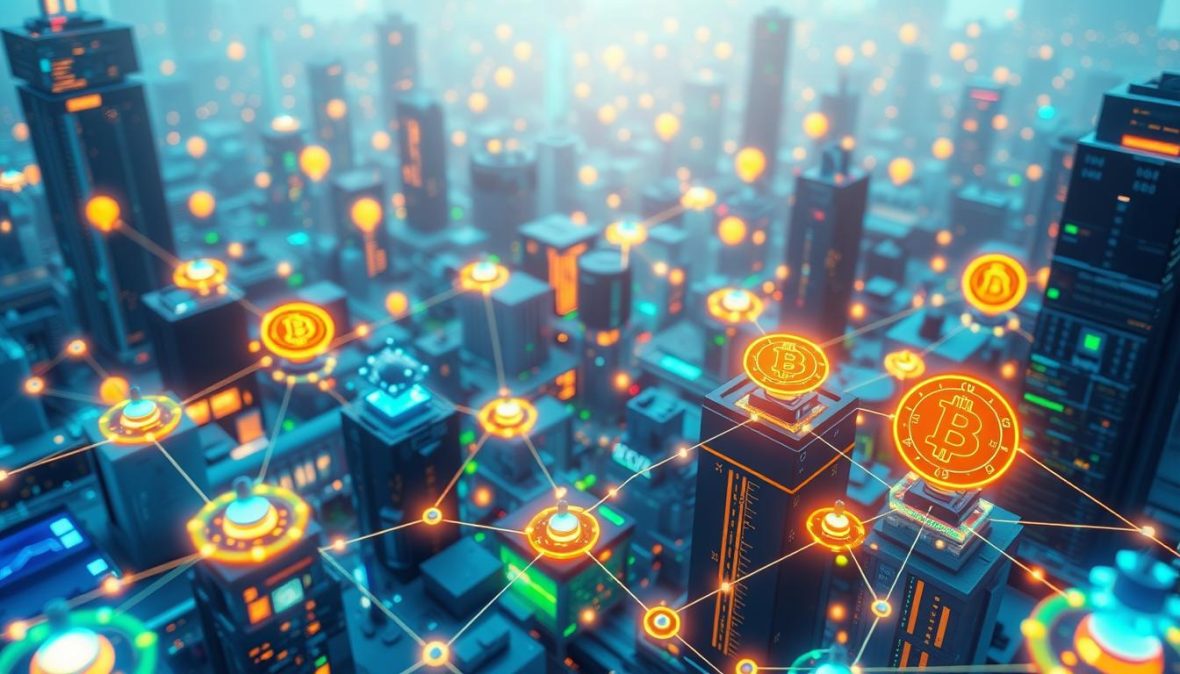Meta Crypto Trends: Latest Developments in 2023

The cryptocurrency landscape is rapidly evolving in 2023, with several key trends shaping the future of digital assets. This article explores the latest developments in meta crypto trends, providing insights into the changing dynamics of the crypto market.
Key Takeaways
- Total value locked (TVL) in DeFi platforms surged to $49.3 billion by May 2023.
- Bitcoin’s growth was significantly bolstered by ETF approvals and halving event anticipation.
- Ethereum reduced its electrical consumption by 99.9% after adopting “proof of stake”.
- AI is playing an increasingly important role in blockchain security and DeFi innovations.
- Tokenization of real-world assets is gaining traction, with predictions of $2 trillion in tokenized assets by 2030.
Bitcoin and Ethereum: Leading the Charge
Bitcoin continues to dominate the crypto market, with significant growth driven by ETF approvals and anticipation of halving events. Ethereum’s transition to proof-of-stake has dramatically reduced its energy consumption, setting a new standard for blockchain efficiency.
The Rise of AI in Cryptocurrency
Artificial Intelligence is revolutionizing blockchain technology, enhancing security measures and driving innovation in decentralized finance (DeFi). AI-powered trading bots and personalized user experiences are becoming increasingly common in the crypto space.
Tokenization: Bridging the Digital and Physical Worlds
The tokenization of real-world assets is gaining momentum, with experts predicting a $2 trillion market by 2030. This trend is making high-value assets more accessible and liquid, transforming traditional investment models.
NFTs: Beyond Digital Art
Non-fungible tokens (NFTs) are evolving beyond the art world, finding applications in gaming, music, and media. The integration of NFTs with DeFi platforms is opening new avenues for digital ownership and value creation.
Layer 2 Solutions and Scalability
Layer 2 technologies like Optimism and Arbitrum are addressing scalability issues, significantly increasing transaction speeds and reducing costs. These solutions are crucial for the widespread adoption of blockchain technology.
Restaking: Maximizing Yield
Restaking is emerging as a popular trend, allowing users to leverage staked tokens across multiple protocols. This practice is enhancing the utility of staked assets and potentially increasing returns for investors.
DeFi: Continued Growth and Innovation
Decentralized Finance continues to expand, with new protocols and services emerging regularly. The integration of DeFi with traditional finance is attracting institutional investors and driving further innovation in the space.
Conclusion
The crypto market in 2023 is characterized by rapid innovation and increasing integration with traditional finance. As the industry matures, we can expect to see continued growth, regulatory developments, and new use cases for blockchain technology. Staying informed about these meta crypto trends is crucial for investors, developers, and enthusiasts alike.
FAQ
What are meta crypto trends in 2023?
Meta crypto trends in 2023 include the growth of DeFi, AI integration in blockchain, tokenization of real assets, and the evolution of NFTs beyond digital art.
Why is it important to keep up with cryptocurrency market trends?
Staying informed about crypto market trends is crucial for making informed investment decisions and understanding the evolving landscape of digital finance.
How has Bitcoin performed in 2023?
Bitcoin has seen significant growth in 2023, driven by ETF approvals and anticipation of halving events.
What role does AI play in the cryptocurrency market?
AI is enhancing blockchain security, driving DeFi innovations, and improving user experiences in crypto platforms.
What is the concept of tokenization of real assets?
Tokenization involves converting real-world assets into digital tokens on the blockchain, making them more accessible and tradable.
